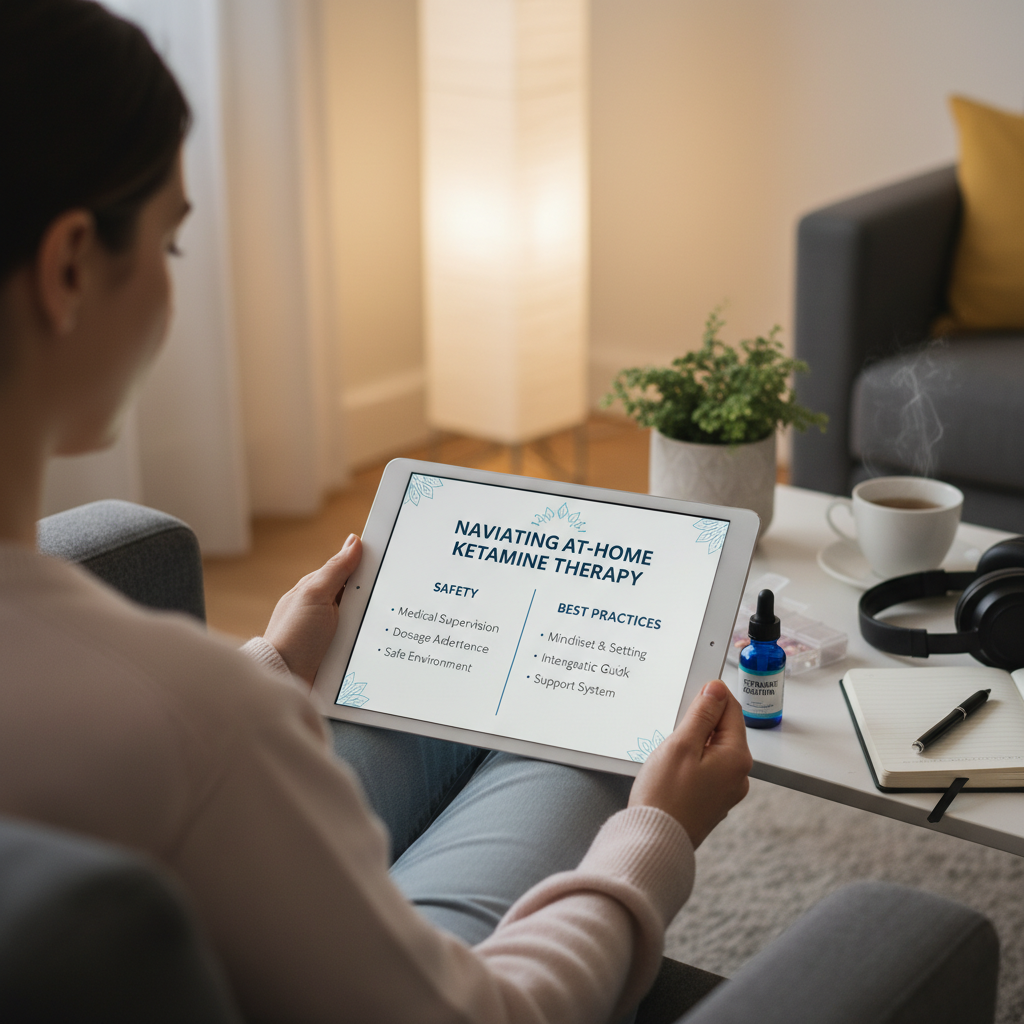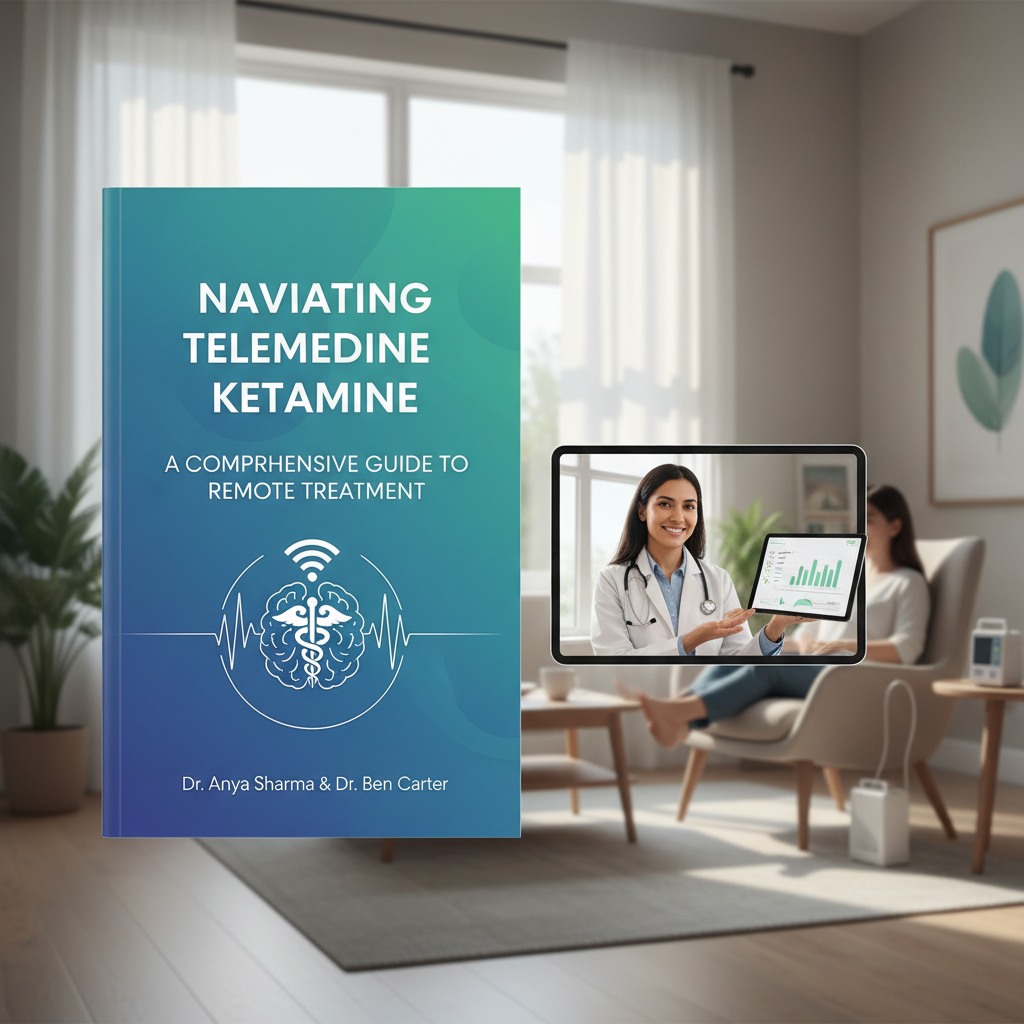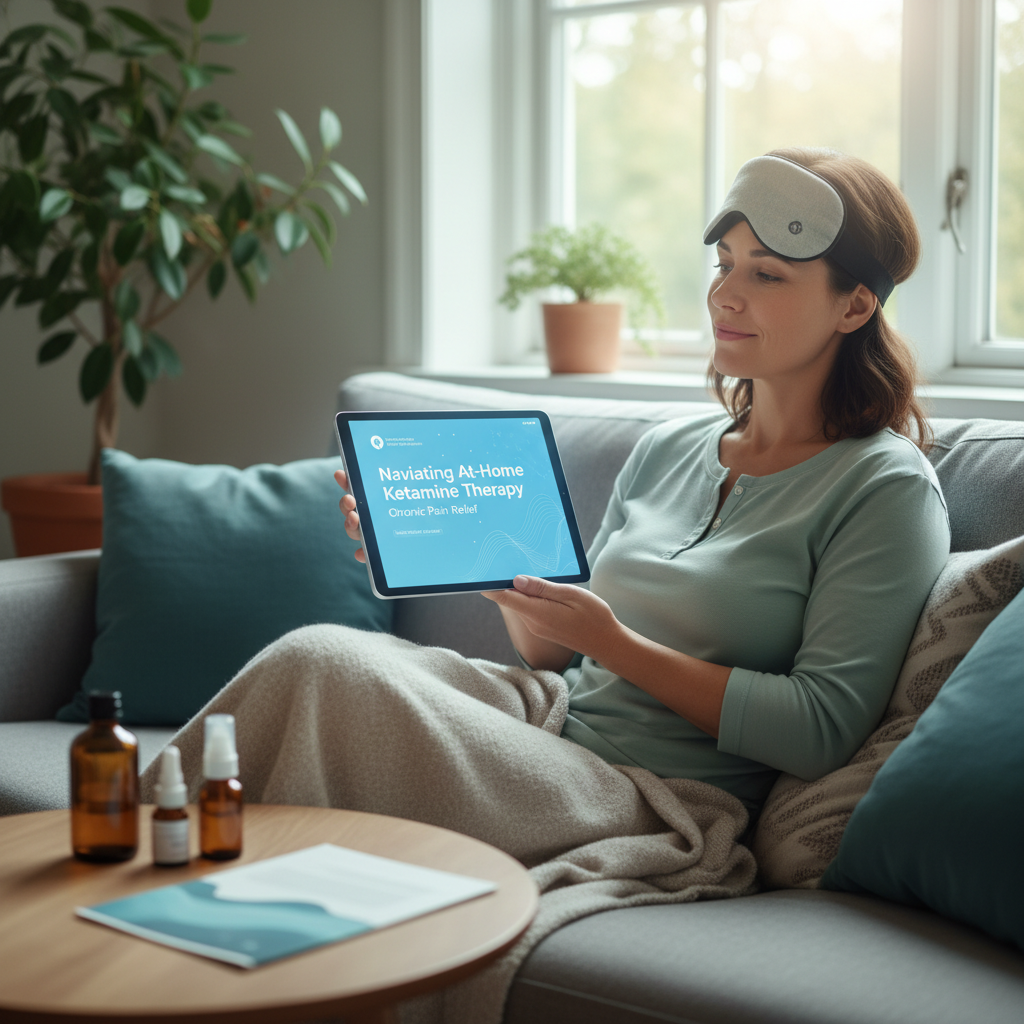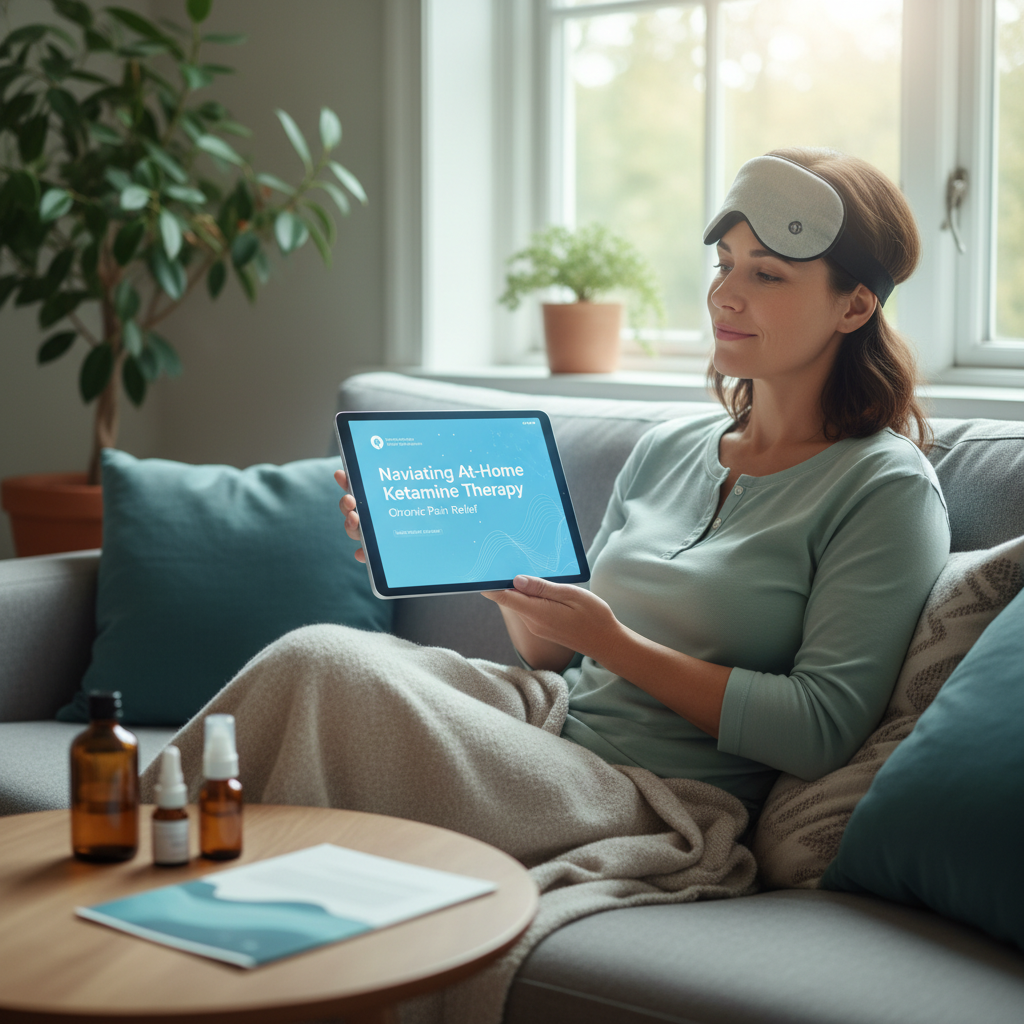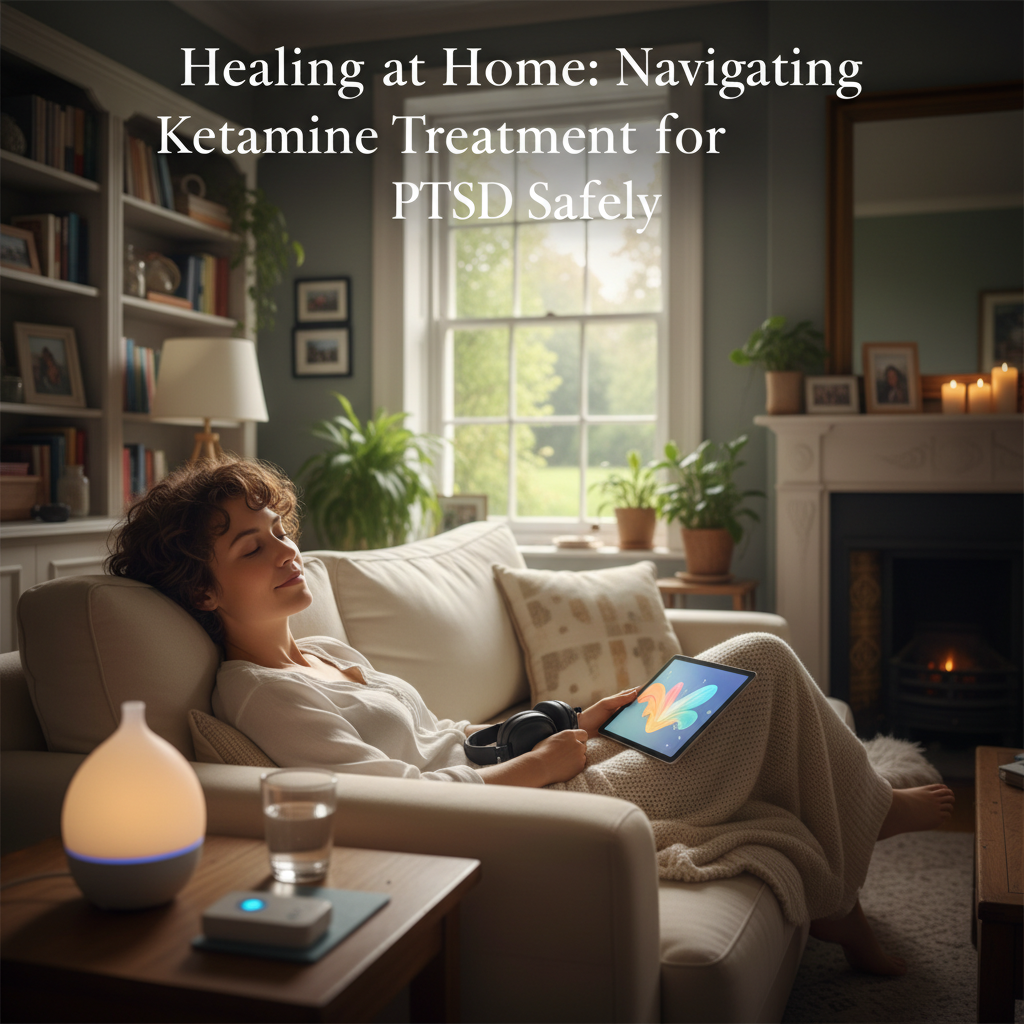A Comprehensive Guide to At-Home Ketamine Therapy for Post-Traumatic Stress
Quick Summary / Key Takeaways
- Ketamine for PTSD offers a promising at-home treatment pathway under strict medical supervision, potentially reducing access barriers for those struggling with trauma.
- Medical screening, preparation, and having a trusted “sitter” are crucial components for safe and effective at-home ketamine-assisted therapy.
- While convenient, at-home treatment requires patient responsibility for adherence to protocols and active engagement in integration therapy post-session.
- Potential side effects, though generally mild and temporary, necessitate comprehensive understanding and clear communication channels with your care team.
- Long-term success often hinges on combining ketamine sessions with ongoing psychotherapy and a supportive environment for processing therapeutic breakthroughs.
Introduction
For those living with the persistent shadow of Post-Traumatic Stress Disorder (PTSD), the search for effective, accessible treatment can feel like navigating a maze in the dark. Traditional therapies, while valuable, don’t always offer the rapid relief or profound shifts many desperately need. Enter ketamine-assisted therapy, an emerging beacon of hope that’s gaining significant attention for its potential to help individuals break free from trauma’s grip. Imagine finding a path to healing not within the sterile walls of a clinic, but in the sanctuary of your own home. This isn’t science fiction; “ketamine for PTSD at home” is becoming a reality for a carefully selected group of patients. This approach combines the therapeutic benefits of ketamine with the comfort and privacy of one’s personal space, offering a unique opportunity for deep introspection and emotional processing. However, the convenience of at-home treatment doesn’t negate the need for stringent safety protocols and expert medical guidance. This isn’t a DIY solution, but rather a carefully structured medical program overseen by licensed professionals. It’s about empowering individuals with agency over their healing journey, while ensuring every step is taken with utmost care and informed decision-making. This article delves into the nuances of at-home ketamine therapy for PTSD, exploring its potential, practical considerations, and what it truly means to heal from trauma with this innovative approach.
At-Home vs. Clinic Ketamine for PTSD: A Comparison
| Feature | At-Home Ketamine Therapy | In-Clinic Ketamine Therapy | Key Consideration |
|---|---|---|---|
| Setting | Patient’s familiar, controlled environment | Dedicated medical facility, controlled atmosphere | Comfort vs. direct medical proximity |
| Supervision Level | Remote medical monitoring; on-site “sitter” | Constant, direct medical staff presence | Personal support vs. professional oversight |
| Cost Factors | Potentially lower overall due to no facility fees | Generally higher due to facility and staff overhead | Budget flexibility vs. comprehensive service |
| Accessibility | Increased for rural, mobility-impaired patients | Limited by location, transportation needs | Ease of access vs. structured scheduling |
Potential Benefits & Risks of At-Home Ketamine for PTSD
| Aspect | Potential Benefit | Potential Risk | Mitigation Strategy |
|---|---|---|---|
| Therapeutic Effect | Rapid symptom reduction for depression, anxiety | Temporary dissociation, altered perception | Proper dosage, safe environment, medical oversight |
| Convenience | Treatment in a familiar, private setting | Lack of immediate emergency response | Trained “sitter,” emergency plan, vital sign monitoring |
| Mental Health | Enhanced neuroplasticity, emotional breakthroughs | Increased anxiety or paranoia during session | Therapeutic guidance, pre-session preparation |
| Physical Health | Generally safe with minimal physical side effects | Blood pressure changes, nausea, dizziness | Pre-screening, hydration, anti-nausea medication |
Application Preparation Checklist
- Secure thorough medical and psychological evaluation for eligibility.
- Designate a trusted, sober “sitter” to be present during the entire session.
- Prepare a quiet, comfortable, and distraction-free environment at home.
- Confirm all necessary medications, vital sign monitors, and emergency contacts are ready.
Post-Arrival Checklist
- Engage in journaling or discussion immediately after the session to process insights.
- Attend all scheduled integration therapy sessions with your mental health provider.
- Monitor and report any lingering side effects or emotional shifts to your care team.
- Maintain healthy routines like sleep, nutrition, and exercise to support ongoing healing.
Table of Contents
Section 1: Understanding At-Home Ketamine for PTSD
- What exactly is at-home ketamine therapy for PTSD?
- How does ketamine specifically help with PTSD symptoms?
- Is at-home ketamine therapy considered safe for PTSD?
- What are the legal and regulatory aspects of at-home ketamine treatment?
Section 2: The At-Home Treatment Process: From Screening to Session
- Who is an ideal candidate for at-home ketamine therapy for PTSD?
- What medical evaluations are required before starting at-home treatment?
- How should one prepare their home environment for a ketamine session?
- What role does a “sitter” or support person play during at-home sessions?
Section 3: Navigating the Session & Post-Treatment Integration
- What does a typical at-home ketamine session feel like?
- How long do the effects of an at-home ketamine session last?
- What are common side effects to expect during and after treatment?
- Why is integration therapy crucial after at-home ketamine sessions?
Section 4: Long-Term Outlook & Considerations
- How effective is at-home ketamine for long-term PTSD symptom reduction?
- Are there any conditions that make at-home ketamine unsuitable?
- What should I consider before committing to at-home ketamine therapy?
Frequently Asked Questions
Section 1: Understanding At-Home Ketamine for PTSD
FAQ 1: What exactly is at-home ketamine therapy for PTSD?
At-home ketamine therapy for PTSD involves medically supervised administration of ketamine in a patient’s residence, typically via oral lozenges or nasal spray. This approach aims to reduce symptoms of PTSD by facilitating neuroplasticity and emotional processing in a comfortable environment. Patients receive comprehensive instructions and remote monitoring from a healthcare provider. The treatment is part of a broader therapeutic program, often combined with psychotherapy.
FAQ 2: How does ketamine specifically help with PTSD symptoms?
Ketamine helps PTSD symptoms by modulating glutamate, a key neurotransmitter, leading to increased neuroplasticity and the formation of new neural connections. This allows individuals to process traumatic memories with less emotional intensity and to develop new perspectives on their experiences. It can also rapidly alleviate co-occurring symptoms like severe depression and anxiety, often providing relief when other treatments have failed. The drug’s dissociative properties can create a temporary mental space for patients to explore their trauma without being overwhelmed. This unique mechanism offers a fresh approach to healing deep-seated trauma.
FAQ 3: Is at-home ketamine therapy considered safe for PTSD?
At-home ketamine therapy can be safe for PTSD when conducted under strict medical supervision and with adherence to established safety protocols. Patients undergo rigorous screening to rule out contraindications, and a designated ‘sitter’ must be present during sessions to ensure safety. Remote vital sign monitoring and clear emergency procedures are also integral components of a safe program. However, without proper oversight, the risks associated with ketamine, such as elevated blood pressure or dissociation, increase significantly. Adherence to medical guidance is paramount for minimizing potential harm.
FAQ 4: What are the legal and regulatory aspects of at-home ketamine treatment?
At-home ketamine treatment for PTSD operates within a complex legal and regulatory landscape that varies by state and country, generally requiring a licensed medical provider’s prescription and oversight. Ketamine is a Schedule III controlled substance, meaning its distribution is tightly regulated by the DEA. Telehealth guidelines have expanded access, allowing for remote consultations and supervision, but specific state medical board regulations dictate the specifics of at-home administration. Patients must ensure their chosen provider complies with all federal, state, and local laws governing controlled substances and telehealth. Always verify your provider’s credentials and compliance.
Section 2: The At-Home Treatment Process: From Screening to Session
FAQ 5: Who is an ideal candidate for at-home ketamine therapy for PTSD?
Ideal candidates for at-home ketamine therapy for PTSD are typically adults with treatment-resistant PTSD who have been thoroughly screened for contraindications and demonstrate a strong support system. They should not have severe uncontrolled medical conditions, active psychosis, or a history of substance abuse. Candidates must be mentally stable enough to follow complex instructions and actively participate in the integration process. A reliable internet connection and a conducive home environment are also practical considerations. It’s a journey for those ready to deeply engage with their healing.
FAQ 6: What medical evaluations are required before starting at-home treatment?
Before starting at-home ketamine therapy for PTSD, comprehensive medical and psychological evaluations are required to ensure patient safety and suitability. These typically include a full medical history, physical exam, and blood tests to check liver and kidney function, as well as an EKG to assess cardiac health. A thorough psychiatric evaluation will confirm a PTSD diagnosis and screen for conditions like uncontrolled bipolar disorder or psychosis, which are contraindications. This rigorous screening process ensures that the potential benefits outweigh any risks, setting a foundation for a safe therapeutic journey. Clear communication with your primary care provider is also essential.
FAQ 7: How should one prepare their home environment for a ketamine session?
Preparing your home environment for a ketamine session involves creating a safe, comfortable, and distraction-free space that promotes introspection and relaxation. Choose a quiet room where you won’t be interrupted, ensuring it’s tidy and visually calming, perhaps with soft lighting. Have a comfortable place to lie down, such as a bed or sofa, and gather items like an eye mask, headphones with a therapeutic playlist, and a blanket. Remove any potential hazards, clear your schedule for the day, and ensure your designated “sitter” knows their role and the emergency plan. This preparation optimizes the therapeutic experience.
FAQ 8: What role does a “sitter” or support person play during at-home sessions?
A ‘sitter’ or support person plays a critical role during at-home ketamine sessions by ensuring the patient’s physical safety and providing emotional support. This individual, typically a trusted friend or family member, does not actively guide the therapy but monitors the patient’s vital signs and general well-being. They are responsible for responding to any urgent needs, contacting emergency services if necessary, and remaining sober and attentive throughout the session. Their presence allows the patient to fully surrender to the experience, fostering a sense of security crucial for therapeutic exploration. The sitter’s calm presence is a grounding anchor.
Section 3: Navigating the Session & Post-Treatment Integration
FAQ 9: What does a typical at-home ketamine session feel like?
A typical at-home ketamine session induces a temporary altered state of consciousness, often described as dissociative, where you might feel disconnected from your body or everyday thoughts. Experiences vary widely but can include vivid imagery, introspective insights, a sense of timelessness, or profound emotional release. The effects usually begin within minutes of administration and last for about 45-90 minutes, followed by a gradual return to baseline awareness. It’s often compared to an internal journey, where perceptions of self and reality can shift, opening new pathways for thought and feeling. Many report a sense of peaceful detachment.
FAQ 10: How long do the effects of an at-home ketamine session last?
The acute, dissociative effects of an at-home ketamine session typically last between 45 to 90 minutes, with a gradual return to baseline over the next 1-2 hours. However, the therapeutic benefits, such as reduced PTSD symptoms and improved mood, can extend far beyond the immediate session. Many patients report lasting relief for days, weeks, or even months, especially when combined with psychotherapy. The neuroplastic changes induced by ketamine facilitate a “window of opportunity” for new learning and emotional processing that can have prolonged effects. This extended impact is why integration therapy is so vital.
FAQ 11: What are common side effects to expect during and after treatment?
During an at-home ketamine session, common side effects can include temporary increases in blood pressure and heart rate, nausea, dizziness, and mild dissociation or perceptual changes. Post-session, individuals might experience lingering fatigue, mild headache, or a brief period of confusion. These effects are generally transient and resolve within a few hours. Your medical team will provide guidance on managing these, such as anti-nausea medication or instructions for monitoring vital signs. Serious adverse events are rare when treatment is properly supervised, but it’s crucial to communicate any discomfort immediately. Hydration and rest are often beneficial after a session.
FAQ 12: Why is integration therapy crucial after at-home ketamine sessions?
Integration therapy is crucial after at-home ketamine sessions because it helps patients process and contextualize the insights and emotional shifts experienced during the altered state. The neuroplastic window opened by ketamine allows for new neural pathways to form, making the brain more receptive to change and learning. Integration sessions, typically with a therapist, provide a structured space to discuss the session’s content, integrate new perspectives into daily life, and develop coping strategies. Without this vital step, the profound experiences from ketamine might remain unintegrated, leading to less sustained therapeutic benefit. It’s the bridge from insight to lasting change.
Section 4: Long-Term Outlook & Considerations
FAQ 13: How effective is at-home ketamine for long-term PTSD symptom reduction?
At-home ketamine, when combined with psychotherapy, shows promising effectiveness for long-term PTSD symptom reduction, though research is still evolving in this specific modality. Many individuals experience significant decreases in symptom severity, including reduced flashbacks, nightmares, and hypervigilance. The neuroplastic changes induced by ketamine, coupled with the integration of insights from sessions, can lead to sustained improvements in mood and functioning. However, ongoing maintenance treatments or booster sessions may be necessary for some patients to sustain these benefits over extended periods. It is not a one-time cure but a powerful tool within a comprehensive treatment plan.
FAQ 14: Are there any conditions that make at-home ketamine unsuitable?
Yes, several conditions make at-home ketamine therapy unsuitable, emphasizing the necessity of thorough medical screening. These include uncontrolled hypertension, severe cardiovascular disease, a history of psychosis (like schizophrenia), or active substance use disorder. Pregnancy, severe liver or kidney disease, and certain neurological conditions are also contraindications. It’s crucial for patients to be completely transparent with their medical team about their health history to ensure safety. Misrepresenting medical history could lead to serious adverse effects during treatment. Safety is always the primary concern.
FAQ 15: What should I consider before committing to at-home ketamine therapy?
Before committing to at-home ketamine therapy, consider several critical factors: the rigor of the medical supervision provided, the comprehensiveness of the integration therapy offered, and your personal support system. Evaluate the program’s adherence to safety protocols, including emergency plans and vital sign monitoring. Reflect on your readiness to engage with potentially intense emotional experiences and your commitment to the integration process. Also, assess the financial investment and insurance coverage, as it may vary. This is a significant therapeutic undertaking that requires careful thought and preparation for success. Choose a provider that prioritizes your safety and long-term well-being.


